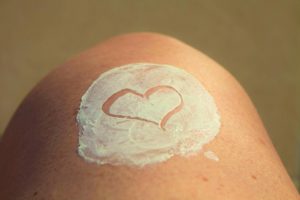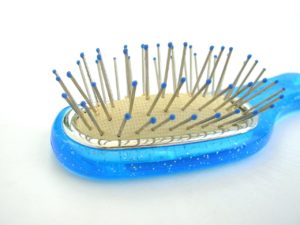DIY Diaper Cream [Show Notes]

Diarrhea is not fun, diarrhea in kids is not fun, diarrhea in kids in diapers is certainly not fun. Diaper rash can flair in just one or two diaper changes.
Diaper rash products
- Protectant ointments: like vaseline, kind of greasy but provide a moisture barrier to keep the skin’s moisture levels from getting out of balance.
- Zinc Oxide: like Desitin, white or opaque and thick, keeps the moisture in the skin in, and the moisture outside the skin out. More completely covers diaper rash so really sore spots can heal faster.
Diaper Rash
Some diaper rashes are caused by a yeast imbalance, so doctors may recommend an OTC or prescription yeast cream.
Sometimes diaper rashes can be really itchy (even though little babies can’t tell you they itch, so all they do is cry), so OTC or prescription steroid creams can be used.
Diaper rash from diarrhea is usually caused by acid that is released in the liquid stool. For babies in diapers, when acidic diarrhea exits the body, it hurts; but then it sits in the diaper and continues to hurt and irritate the skin. Not to mention the irritation that may have already occurred due to frequent diaper changes.
A frequently recommended fix for diaper rash is air. Letting the rash air dry and not be closed up in a diaper can work a lot of times. That doesn’t sound like a great solution if baby has diarrhea.
There’s a butt paste that pharmacies can compound with a doctor’s prescription.
Recipe
- Aquaphor ointment (OTC) – kind protectant
- Mylanta (OTC) – antacid to neutralize acid
- Cholestyramine powder (Rx) – medication that treats cholesterol by trapping up lipids in the intestines so the body doesn’t absorb it – it can trap up bile that comes out in the stool
You can use 2 out of the 3 ingredients and do this yourself with a couple tools in your kitchen!
- Heat the tub of aquaphor on a hot plate, or warm it in a double boiler, until melted. (You don’t want to have to remove all the ointment from the tub to melt b/c you’ll waste some and it’ll be really gooey).
- Add 2 Tbsp (30 ml, 1 fl. oz) of Mylanta to liquid Aquaphor and stir well.
- Let it cool! Do not put warm ointment on your baby!
- Apply to baby bum as needed for diaper rash.
Doesn’t have to be just for babies….
Anyone who has had diarrhea and experienced the burn from the acid and irritation from frequent stools can benefit from this product.
Connect with me
Support us on Patreon
*NEW* Join the Pharmacist Answers Podcast Community on Facebook
Subscribe: iTunes, Stitcher, GooglePlay, TuneIn Radio
Music Credits: “Radio Martini” Kevin MacLeod (incompetech.com) Licensed under Creative Commons: By Attribution 3.0 http://creativecommons.org/licenses/by/3.0/





